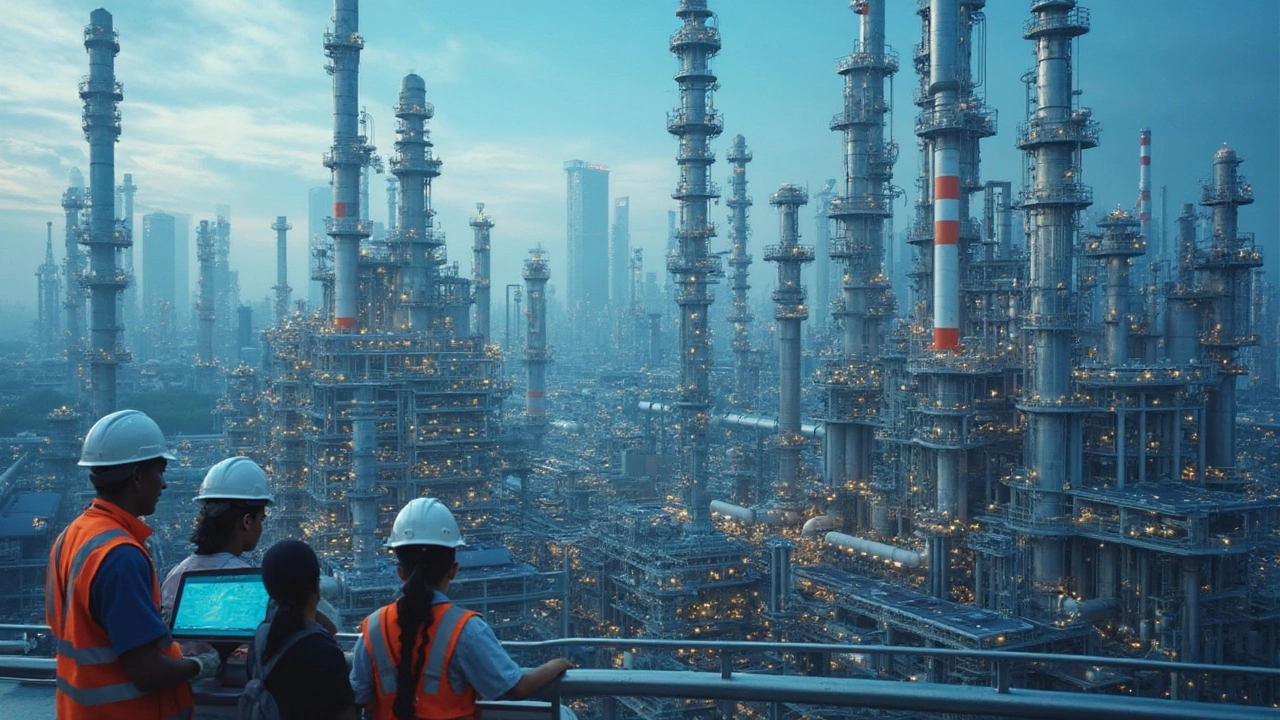Chemical Industry: Trends, Challenges, and Opportunities in India
India’s chemical sector is a huge part of the country’s economy – it fuels everything from pharma to plastics, fertilizers to cosmetics. If you work in manufacturing, invest in chemicals, or just want to understand where the next big growth wave will hit, you’re in the right place. We’ll break down what’s hot, what’s risky, and how you can stay ahead without getting lost in jargon.
Key Trends Shaping India’s Chemical Industry
First off, demand is booming. The push for specialty chemicals – the high‑value formulas used in electronics, health care, and clean energy – is outpacing bulk commodity chemicals. Companies that invest in R&D for these niche products see higher margins and quicker market entry. At the same time, sustainability is no longer a buzzword. Customers, both domestic and overseas, expect greener processes, low‑VOC formulations, and recycled‑material inputs. That pressure is driving a wave of green chemistry labs across Gujarat, Maharashtra, and Tamil Nadu.
Second, digital tools are cutting costs. Plant‑level IoT sensors monitor temperature, pressure, and waste streams in real time, letting managers tweak operations on the fly. The data also helps meet stricter safety standards – a win‑win for the bottom line and regulators. If you’re still using paper logs, you’re likely losing both efficiency and compliance credibility.
How to Navigate Regulations and Stay Competitive
India’s chemical rules are tightening. The 2025 banned chemicals list adds several high‑risk substances to the watchlist, from certain phthalates to outdated pesticides. Staying compliant means keeping a live inventory of every raw material and regularly checking the Central Pollution Control Board’s notifications. Many firms now hire a dedicated compliance officer or outsource to a consultancy that tracks updates in real time.
Beyond bans, you’ll encounter licensing hurdles. A new manufacturing unit typically needs a Factory Licence, Hazardous Waste Management Authorization, and, for certain products, a specific Central Drug Standard Control Organization (CDSCO) approval. The paperwork can feel endless, but building a checklist early saves weeks of back‑and‑forth with officials.
One practical tip: align your product roadmap with the government’s priority sectors. The Ministry of Chemicals and Fertilizers offers subsidies for projects that focus on bio‑based polymers, water‑friendly solvents, and renewable feedstocks. Applying for these schemes early can offset capital costs and improve your ROI.
Finally, talent matters. Skilled chemists and process engineers who understand both lab‑scale synthesis and large‑scale production are in short supply. Partnering with local universities for internships or sponsoring research projects can create a pipeline of talent that’s tailored to your technology needs.
To sum up, the Indian chemical industry is ripe with opportunity if you watch the trends, respect the regulations, and invest in technology and people. Keep an eye on specialty chemicals, adopt digital monitoring, stay ahead of the banned‑substance list, and tap government incentives. With those moves, you’ll be positioned to ride the growth wave and turn challenges into profit.
Ready to take the next step? Start by mapping your current product mix against the 2025 banned chemicals list and identify any gaps. From there, sketch a digital upgrade plan – even a simple sensor on a critical valve can pay for itself in a few months. The future of India’s chemical industry is bright, and the best time to act is now.
World's Largest Chemical Manufacturer: Who Holds the Crown?
Curious about the biggest name in the chemical business? This article uncovers who leads the global chemical manufacturing scene, breaking down what sets them apart. It dives into their production scale, market impact, and where Indian manufacturers fit in the race. Get a behind-the-scenes look at their strategies and how they drive innovation. Find practical info and real-world examples to understand why scale matters and what it means for buyers, investors, and aspiring chemists.
Read MoreTop Chemical Used in India: A Look into Its Industrial Impact
India's chemical industry, one of the biggest globally, heavily relies on sulfates, with sulfuric acid as the leading player. Used across various sectors, from agriculture to energy, it dramatically influences production efficiencies. Delving into this chemical's wide applications offers insights into its role in India's economic and industrial landscape.
Read MoreCurrent Chemical Shortages in India: Causes and Solutions
India is facing significant chemical shortages impacting various industries. This article explores the underlying causes of these shortages, the specific chemicals most affected, and the broader implications for manufacturers. It also provides an overview of how manufacturers are coping and adapting to these challenges while presenting some actionable insights for stakeholders. Understanding these dynamics is crucial for navigating the current landscape and planning for future resiliency.
Read More


